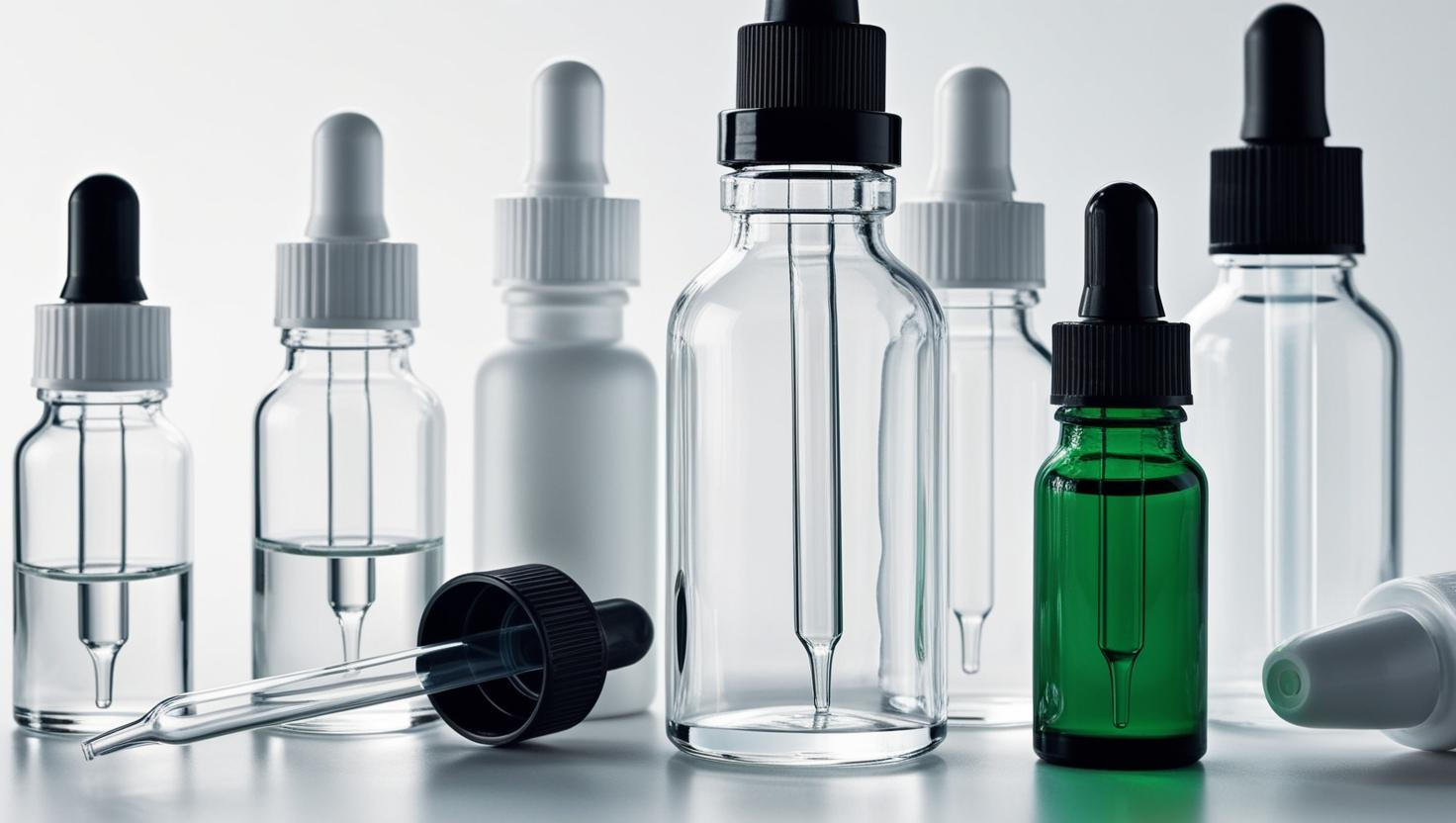
Dropper bottles are convenient for dispensing liquids, but using them correctly ensures precision and efficiency. Misuse can lead to waste or inaccurate dosing.
To use a dropper bottle, squeeze the rubber bulb, release it to draw liquid, then gently squeeze again to dispense drops.
Mastering dropper bottles can help in skincare, essential oils, and medical applications. Let's explore their uses and benefits.
How much is one drop from a dropper bottle?
The size of a drop varies based on the liquid’s viscosity and the dropper tip.
On average, one drop from a standard dropper bottle is approximately 0.05 mL.)1 (or 20 drops per milliliter).

Factors affecting drop size
- Viscosity: Thicker liquids produce larger drops.
- Dropper design: Narrow tips release smaller drops.
- Squeezing pressure: More force can alter drop size.
To ensure accuracy, use a graduated dropper or pipette, as drop size can vary2 based on these factors.
What can I do with dropper bottles?
Dropper bottles are versatile and can be used for various applications.
They are commonly used for skincare, essential oils, DIY blends, and precise liquid measurements.

Common uses
- Skincare: Store serums, facial oils, and liquid treatments.
- Essential oils: Dispense and mix essential oils for aromatherapy.
- DIY projects: Create custom blends of perfumes, tinctures, or herbal extracts.
- Laboratory applications: Measure and transfer small liquid amounts.
If you're looking for more ideas, check out this guide on common uses for dropper bottles3.
What are dropping bottles used for?
Dropper bottles serve many industries beyond just cosmetics and DIY products.
They are widely used in pharmaceuticals, laboratories, and cosmetics for precise liquid dispensing.

Industries using dropper bottles
| Industry | Application Examples |
|---|---|
| Pharmaceuticals | Eye drops, liquid medicine |
| Cosmetics | Facial serums, hair oils |
| Laboratories | Chemical solutions, reagents |
| Aromatherapy | Essential oil storage |
To learn more about their professional applications, visit this resource on dropper bottle uses in pharmaceuticals4.
Can you recycle dropper bottles?
Sustainability is a growing concern, and proper disposal of dropper bottles matters.
Yes, glass dropper bottles are recyclable, but components like rubber bulbs and plastic droppers need separate disposal.

Recycling tips
- Glass bottles: Rinse and recycle with other glass containers.
- Plastic droppers: Check local recycling guidelines.
- Rubber bulbs: Typically non-recyclable, dispose of as regular waste.
For best practices, check this guide on recycling dropper bottles5.
Conclusion
Dropper bottles offer precise liquid control and versatile applications. Proper use, measurement, and recycling can enhance their efficiency and sustainability.
Footnotes:
-
This helps readers verify the accuracy of the drop size measurement. ↩
-
Understanding these factors ensures precision when using a dropper bottle. ↩
-
Readers can explore more applications beyond what is listed. ↩
-
Provides additional industry insights for professional use cases. ↩
-
Helps readers learn the correct way to dispose of dropper bottles. ↩

